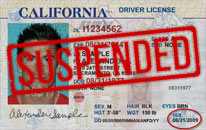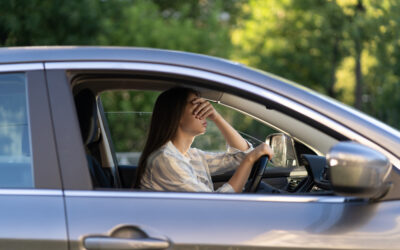Drivers have a critical duty to operate vehicles responsibly, and this responsibility extends to maintaining proper following distances according to California Vehicle Code 21703. This law explicitly prohibits following too closely than is reasonable and prudent given the speeds, traffic conditions, and roadway environment at that time.
Failing to use appropriate spacing and tailgating can easily lead to rear-end collisions. That’s why VC 21703 outlines strict legal requirements for how much distance drivers must keep when following other vehicles.
Violators may face citations and liability risks. Let’s explore the specifics of this CA Vehicle Code VC 21703 – Following Too Closely (Tailgating) and how a Los Angeles DUI Lawyer with our firm may be able to help you understand California vehicle code.
What Does CA Vehicle Code VC 21703 – Following Too Closely (Tailgating) Prohibit?
On California’s roads and highways, drivers have a duty to operate their vehicles in a safe and responsible manner. This includes maintaining a proper following distance from other vehicles. California Vehicle Code 21703 outlines the legal requirements for how closely one vehicle can follow another.
California vehicle code is complex and open to interpretation, so it is generally worthwhile to consult an attorney before admitting to anything.
According to the language of VC 21703:
“The driver of a motor vehicle shall not follow another vehicle more closely than is reasonable and prudent, having due regard for the speed of such vehicle and the traffic upon, and the condition of, the roadway.”
In simpler terms, this law makes it illegal for a driver to follow another vehicle at an unsafe close distance that does not account for:
- The speed the vehicles are traveling
- The amount of surrounding traffic
- The road conditions at the time
By requiring drivers to use reasonable care and prudence when following other cars and trucks, VC 21703 aims to prevent rear-end collisions and other accidents caused by tailgating.
How Close Is too Close?
There is no set defined distance that is considered “following too closely” under the law. Instead, it depends on the specific circumstances and whether the following distance allows enough reaction time and stopping ability for an attentive driver to avoid a collision.
The determination is based on a reasonableness standard given the particular driving conditions at the time. As a general rule of thumb, many safety organizations, including the safe driving section of the California Driver’s Handbook, recommend following at least 3 seconds behind the vehicle in front of you.
This “3-second rule” gives you an adequate buffer in case the lead driver needs to brake suddenly. However, even the 3-second following distance should be considered a minimum guideline.
This minimum 3-second distance should be increased when operating under riskier circumstances like:
- Driving at higher speeds
- In heavy stop-and-go traffic
- Bad weather conditions
- When driving a larger vehicle like a semi-truck or while towing a trailer
- On slippery, uneven, or poorly maintained road surfaces
By allowing much more generous following room in these higher-risk scenarios, attentive drivers can better perceive hazards and avoid devastating rear-end collisions.
Penalties for Violating VC 21703
Tailgating is a serious offense in California and can result in not only a hefty fine of $238 but also a point on your driving record. This may seem minimal, but points on your record can have long-lasting consequences.
Insurance companies often viewpoints on a driving record as a red flag for risky behavior, which could lead to an increase in insurance rates for years to come. Additionally, accumulating enough points within a certain time frame could result in the suspension of your driver’s license for negligent driving.
If a driver receives four points on their license within a 12-month period due to offenses such as tailgating, they could face the possibility of having their license suspended. This can be incredibly inconvenient and disruptive to daily life, as well as causing potential employment or logistical issues.
Additional Consequences
Additionally, if following too closely results in an accident causing injury or property damage, the driver faces much more serious consequences. These could include monetary liability in a civil lawsuit, as well as potential criminal charges like reckless driving in egregious cases.
Contact Us for a Free Case Evaluation
If you’ve been cited for a violation of California Vehicle Code 21703 for following too closely or tailgating in conjunction with a DUI, the consequences could seriously impact your driving record, insurance rates, and even your ability to stay legally licensed.
To protect your rights and driving privileges from these severe penalties, you’ll want an experienced legal advocate in your corner who has successfully handled similar tailgating and unsafe following cases. Don’t go it alone against these charges.
Contact the Los Angeles DUI Lawyers today to go over the specifics of your citation during a free consultation. We can evaluate all the evidence, explain your options for fighting the violation, and develop a strong defense strategy tailored to your situation.







